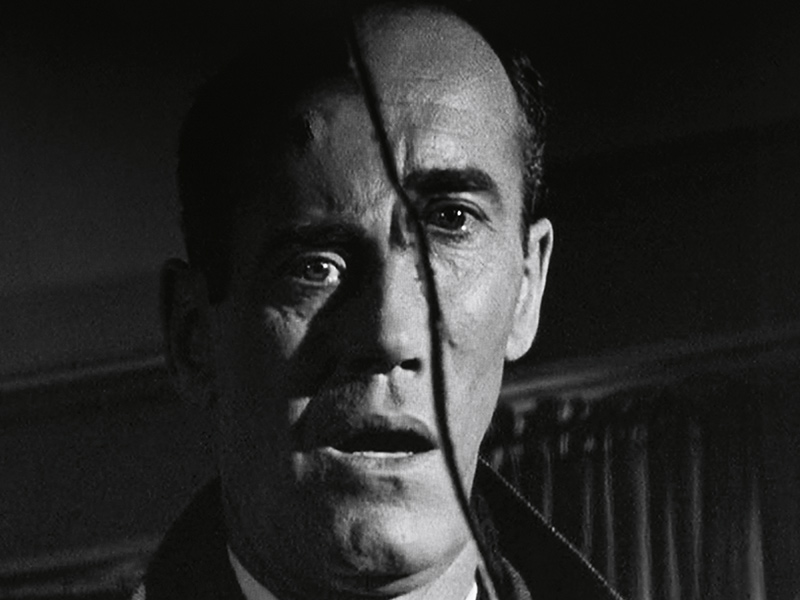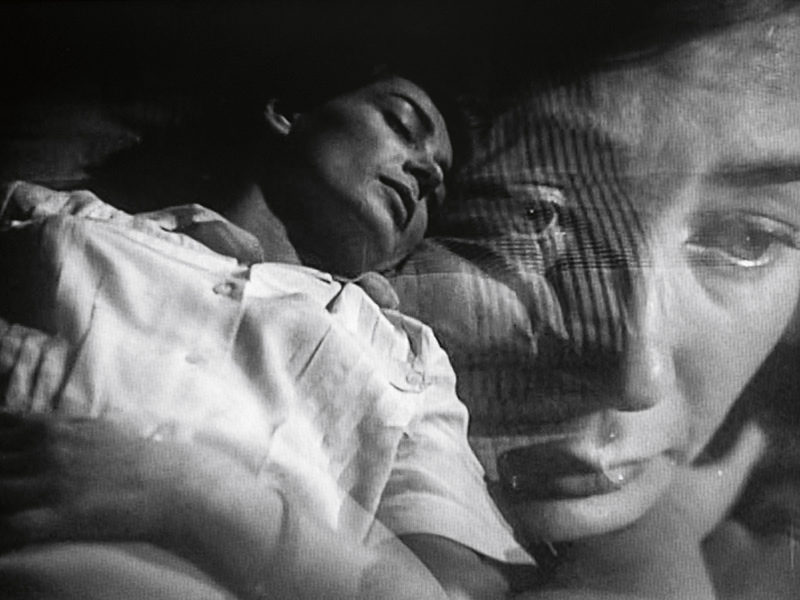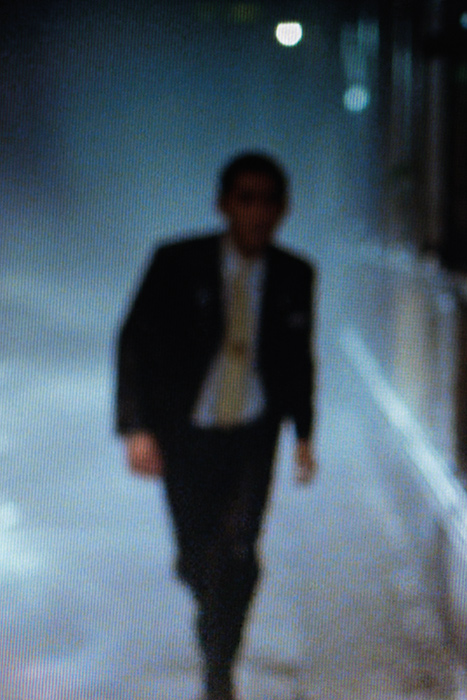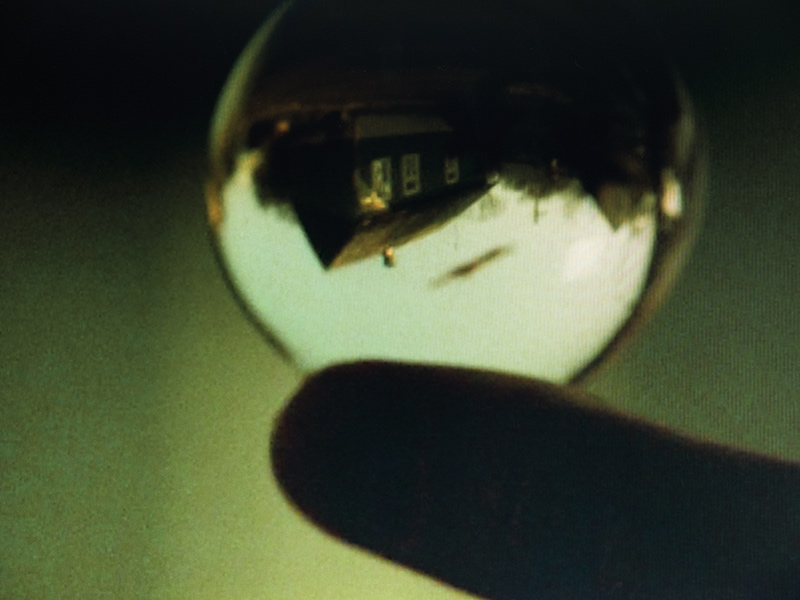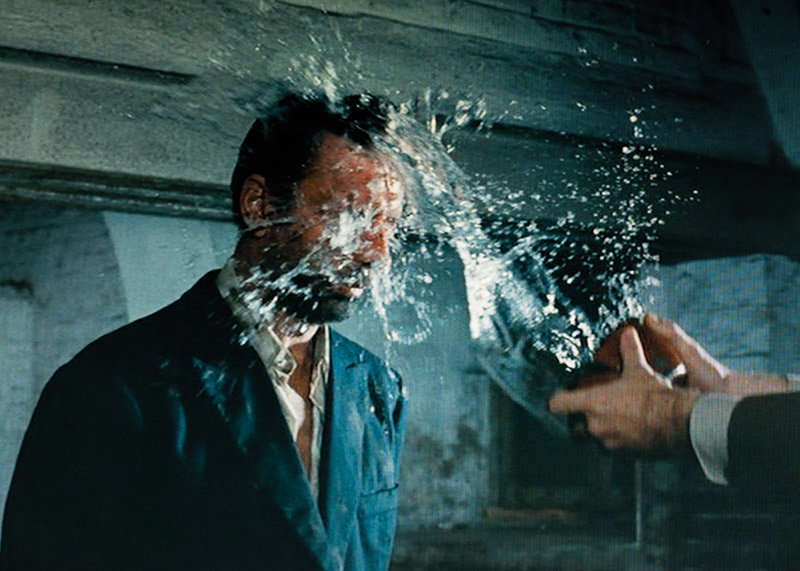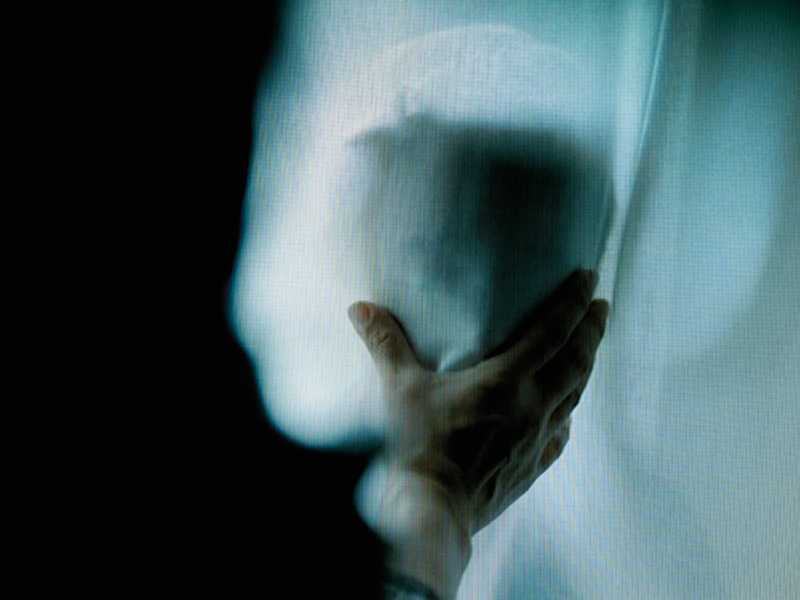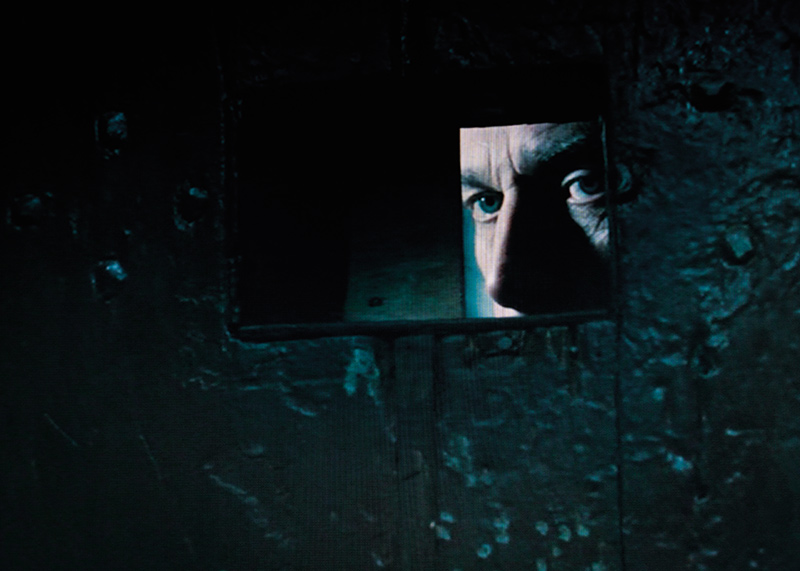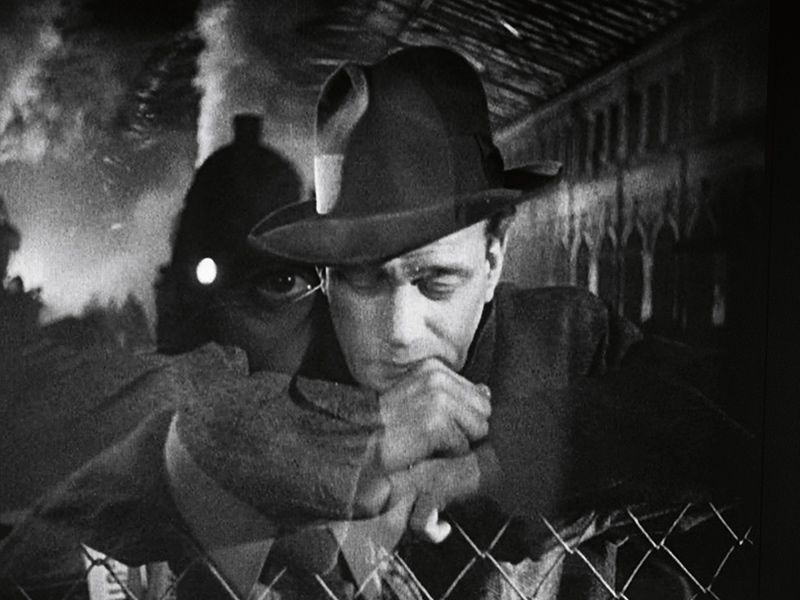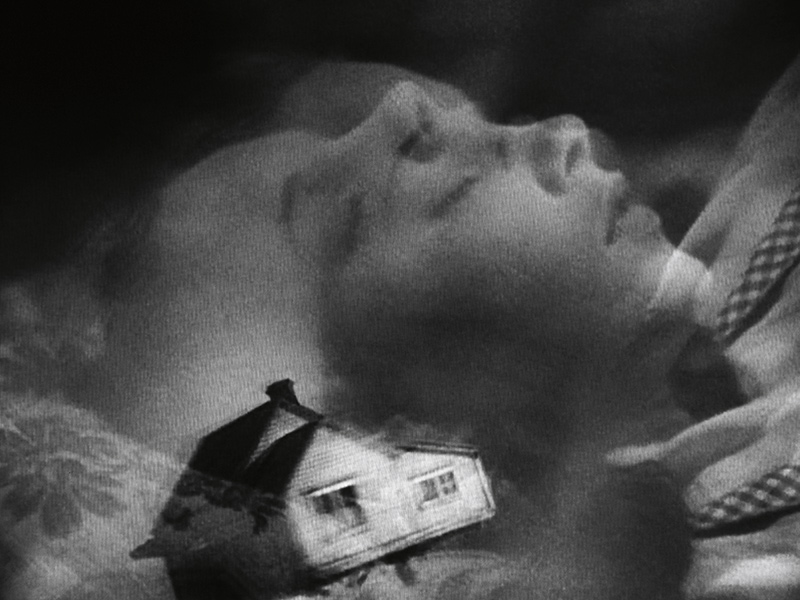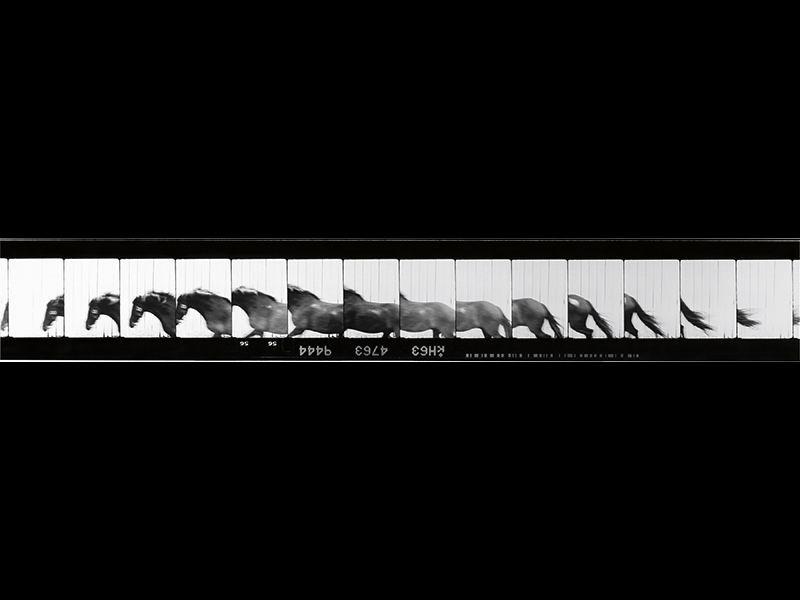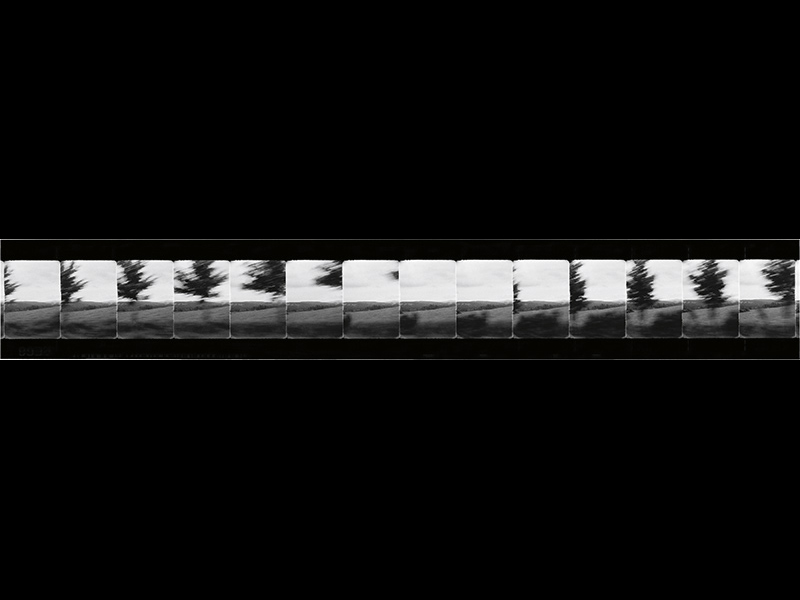[Summer 2019]
By Sylvain Campeau
Bertrand Carrière has had a long relationship with the film world. Before establishing himself as an artist, he took many pictures as a soundstage photographer. But such images must not be seen solely as the result of a professional practice that imposed frameworks and constraints on the creation of images. On the fringes of this practice, he chose to make portraits of filmmakers and even to go, almost as pure gawker, to film sets to feed his hunger for images. Many examples of this endeavour adorn the walls of Salle Luce-Guilbeault, at the Cinémathèque québécoise1, in what forms a sort of waiting room and lobby for the movie theatres. We find among these images, produced on the outskirts of movie shoots, Jean-Luc Godard, Jane Birkin, Pierre Falardeau, and Sami Frey.
It is, rather, in Les Images-temps, a series produced from 1997 to 2000, that we must find a reference and a precedent for what Carrière decided to do when invited to a residency at the Cinémathèque. Like others before him, he went to explore the institution’s archives, seeking images and movies that would move and inspire him. His eye fell first on film noir, a genre that features the desperate hero, stuck in tricky situations whose stakes he cannot always know. Perhaps it was the ambiences – the chiaroscuros, the expressionist lighting, the constrained spaces in which the protagonists moved – that attracted Carrière. The first section of his exhibition, in Salle MacLaren, is devoted to them. It is true that there is something intensely photographic in these productions. And so, in Images-noires, there appear images from iconic movies: The Maltese Falcon (John Huston, 1941), On the Waterfront (Elia Kazan, 1954), North by Northwest (Alfred Hitchcock, 1959), Psycho (1960), The Birds (1963), and The Third Man (Carol Reed, 1949). What is unusual, though, and refers us back to Les Images-temps, in which Carrière exploited the same technique, is that they are sometimes shown not as single frames taken from the plot of the movie but as extended excerpts, showing the movie itself, with the images succeeding each other.
Bertrand Carrière has had a long relationship with the film world. Before establishing himself as an artist, he took many pictures as a soundstage photographer. But such images must not be seen solely as the result of a professional practice that imposed frameworks and constraints on the creation of images. On the fringes of this practice, he chose to make portraits of filmmakers and even to go, almost as pure gawker, to film sets to feed his hunger for images. Many examples of this endeavour adorn the walls of Salle Luce-Guilbeault, at the Cinémathèque québécoise,1 in what forms a sort of waiting room and lobby for the movie theatres. We find among these images, produced on the outskirts of movie shoots, Jean-Luc Godard, Jane Birkin, Pierre Falardeau, and Sami Frey.
It is, rather, in Les Images-temps, a series produced from 1997 to 2000, that we must find a reference and a precedent for what Carrière decided to do when invited to a residency at the Cinémathèque. Like others before him, he went to explore the institution’s archives, seeking images and movies that would move and inspire him. His eye fell first on film noir, a genre that features the desperate hero, stuck in tricky situations whose stakes he cannot always know. Perhaps it was the ambiences – the chiaroscuros, the expressionist lighting, the constrained spaces in which the protagonists moved – that attracted Carrière. The first section of his exhibition, in Salle MacLaren, is devoted to them. It is true that there is something intensely photographic in these productions. And so, in Images-noires, there appear images from iconic movies: The Maltese Falcon (John Huston, 1941), On the Waterfront (Elia Kazan, 1954), North by Northwest (Alfred Hitchcock, 1959), Psycho (1960), The Birds (1963), and The Third Man (Carol Reed, 1949). What is unusual, though, and refers us back to Les Images-temps, in which Carrière exploited the same technique, is that they are sometimes shown not as single frames taken from the plot of the movie but as extended excerpts, showing the movie itself, with the images succeeding each other.
One might think that these photographic images are simply frames from an original movie. But they are not. Carrière did not have direct access to the films – that would be impossible (what a surprise!). They are from a copy on DVD viewed on a computer screen. He made the images without being able to provide a perfect analogue of the work reprised – first, because the camera position did not allow it, as there is a difference in format between the original film and the framing that the Arriflex he was using allowed for. Part of the image is therefore outside the frame in this re-filming. But there is also another pitfall that he encountered and had to overcome for Les Images-temps. Projectors for 16 mm and 35 mm film work the same way: the bobbins that unfurl the long ribbon of film are positioned above and below the lens. When the movie is viewed in action, the ribbon of film is unrolled vertically and seen from top to bottom. However, for Les Images-noires, like Les Images-temps before it, the film unfurls horizontally in the images exhibited at the Cinémathèque, as is normal for photographic negatives. And this is not the only major change that was made. Whereas film frames are conventionally shown at twenty-four images per second to offer the illusion of movement, Carrière modulated his shooting strategy to twelve, or as few as eight, images per second. This is because, at twenty-four images per second, the set of images was so long that it would have required a digital print twice as large as it is in the version shown. At twelve images per second, the animation is greater and more accentuated.
Carrière concentrated on cross-fade sequences. We therefore see a scrolling of images that form the transition between two scenes and can observe, in a way that’s both detailed and intermittent, this moment of overlapping, these multiple in-stants in the interval between scenes, seen in the movie itself in a condensed and fluid version. To these scrolled images correspond others, one-offs and larger, in which the super-imposition of two scenes is even more obvious.
It thus becomes clear that all of this is actually impossible. First, what cross-fades accomplish is, in fact, impossible: they allow for a transition from one space-time in the story to another, which, of course, cannot take place in real life. Impossible as well is the image in which two scenes overlap, seen as it cannot be seen in the theatre or anywhere else. Finally, the conditions for dealing with and presenting the image had to be manipulated in a way that is inconceivable in films. If this strip of film existed as Carrière created it, we would not see this cross-fade at all, as it would occur too quickly.
For the second series, Les Écrans lumineux, Carrière also worked on a computer screen. This time, however, he offers unique, single images. They also represent a moment passing as it could not have been seen on screen. We see everything: frames from The Tree of Life (Terrence Malick, 2011), La Double vie de Véronique (Krzysztof Kies´lowski, 1991), and Le Requiem pour un beau sans-cœur (Robert Morin, 1992). These movies were not shot in black and white, as were most in Les Images-noires. Carrière’s colour images taken from a screen, in their luminosity and size, are almost the antithesis of the preceding ones, which are all chiaroscuro and high contrast. But both series remind us that film has to do primarily with light – as does photography.
But there is also the question of time. That is why a last series, which enhances what was accomplished with the first, awaits us at the end: Les Images-temps. Here, we are presented with gelatin-silver prints taken from the series presented, but differently, in 1999. Here, there are fewer images in which the complete film sequence of a scene is displayed. But these prints, dating from the late 1990s, offer definite similarities with Les Images-noires. The goals clear in Les Images-noires: to probe time and find a way of rendering its flow with still images that are combined to reproduce the animated forms of movies.
One piece presents an obvious tribute to a precursor of the research that led to the animated image. It is the images of a horse in movement, the result of Eadweard Muybridge’s experiments in the 1880s. One last tip of the hat, before leaving: the arrival of a train at a Saint-Lambert station that unfailingly refers back to a film by the Lumière brothers dating from 1896.
At the end of the visit to this exhibition, we will have understood that this encounter between Carrière and movies, produced in the late 1990s, has finally found its true complement in this opportunity offered by the Cinémathèque.
Translated by Käthe Roth
Sylvain Campeau contributes to numerous Canadian and European magazines. He is also the author of the essays Chambre obscure: photographie et installation, Chantiers de l’image, and Imago Lexis, as well as five collections of poetry. As a curator, he has organized some thirty exhibitions.
Over the last forty years, Bertrand Carrière has built a body of photographic work that is both personal and varied. He has had exhibitions in Quebec and Canada, the United States, Europe, Russia, and China, and has published a number of books, including Dieppe, paysages et installations (400 coups, 2004) and, more recently, Le Capteur (Éditions du Renard, 2015). A recipient of grants from different councils for the arts (Québec, Canada, and Longueuil), he teaches photography at the Université de Sherbrooke. He is represented in Montreal by Galerie Simon Blais and in Toronto by the Stephen Bulger Gallery. bertrandcarriere.com
[ Complete issue, in print and digital version, available here: Ciel variable 112 – COLLECTIONS REVISITED ]
[ Individual article in digital version available here: Bertrand Carrière, Tout ceci est impossible — Sylvain Campeau, Time is Impossible ]

